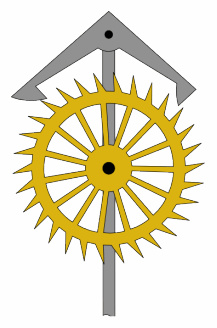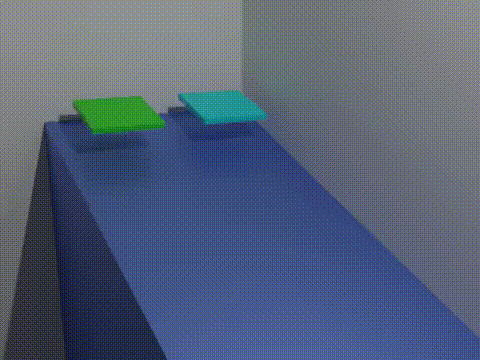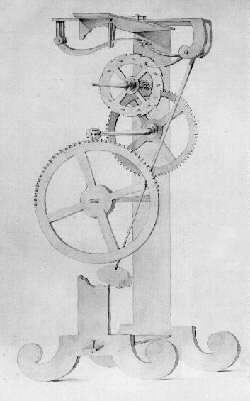|
Coaxial Escapement
The coaxial escapement is a type of modern watch escapement mechanism invented by English watchmaker George Daniels in 1976 and patented in 1980. It is one of the few watch escapements to be invented in modern times and is used in most of the mechanical watch models currently produced by Omega SA. History During the quartz crisis, English watchmaker George Daniels accepted a commission from American industrialist and watch collector Seth G. Atwood to create a timepiece that would fundamentally improve the performance of mechanical watches. As a result, Daniels invented the coaxial escapement in 1974 and patented it in 1980. The ''Atwood watch'' for Seth G. Atwood was completed in 1976. Influences Charles Fasoldt Charles Fasoldt, a German-American watch- and clockmaker, was instrumental in the development of the escapement mechanism. His patented escapement of 1865 introduced a novel duplex design with co-axially mounted twin escape wheels and a three-pallet lever. This desi ... [...More Info...] [...Related Items...] OR: [Wikipedia] [Google] [Baidu] |
Escapement
An escapement is a mechanical linkage in mechanical watches and clocks that gives impulses to the timekeeping element and periodically releases the gear train to move forward, advancing the clock's hands. The impulse action transfers energy to the clock's timekeeping element (usually a pendulum or balance wheel) to replace the energy lost to friction during its cycle and keep the timekeeper oscillating. The escapement is driven by force from a coiled spring (device), spring or a suspended weight, transmitted through the timepiece's gear train. Each swing of the pendulum or balance wheel releases a tooth of the escapement's ''escape wheel'', allowing the clock's gear train to advance or "escape" by a fixed amount. This regular periodic advancement moves the clock's hands forward at a steady rate. At the same time, the tooth gives the timekeeping element a push, before another tooth catches on the escapement's pallet, returning the escapement to its "locked" state. The sudden stoppi ... [...More Info...] [...Related Items...] OR: [Wikipedia] [Google] [Baidu] |
Lever Escapement
The lever escapement, invented by the English clockmaker Thomas Mudge in 1754 (albeit first used in 1769), is a type of escapement that is used in almost all mechanical watches, as well as small mechanical non-pendulum clocks, alarm clocks, and kitchen timers. An escapement is a mechanical linkage that delivers impulses to the timepiece's balance wheel, keeping it oscillating back and forth, and with each swing of the balance wheel allows the timepiece's gear train to advance a fixed amount, thus moving the hands forward at a steady rate. The escapement is what makes the "ticking" sound in mechanical watches and clocks. Invention The lever escapement was invented by British clockmaker Thomas Mudge around 1754, and improved by Abraham-Louis Breguet (1787), Peter Litherland (1791), and Edward Massey (1800). Its modern ("table roller") form was developed by George Savage in the early 1800s. Since about 1900 virtually every mechanical watch, alarm clock and other portable ... [...More Info...] [...Related Items...] OR: [Wikipedia] [Google] [Baidu] |
Escapement Gear
An escapement is a mechanical linkage in mechanical watches and clocks that gives impulses to the timekeeping element and periodically releases the gear train to move forward, advancing the clock's hands. The impulse action transfers energy to the clock's timekeeping element (usually a pendulum or balance wheel) to replace the energy lost to friction during its cycle and keep the timekeeper oscillating. The escapement is driven by force from a coiled spring or a suspended weight, transmitted through the timepiece's gear train. Each swing of the pendulum or balance wheel releases a tooth of the escapement's ''escape wheel'', allowing the clock's gear train to advance or "escape" by a fixed amount. This regular periodic advancement moves the clock's hands forward at a steady rate. At the same time, the tooth gives the timekeeping element a push, before another tooth catches on the escapement's pallet, returning the escapement to its "locked" state. The sudden stopping of the esca ... [...More Info...] [...Related Items...] OR: [Wikipedia] [Google] [Baidu] |
Pallet Stone
A pallet (also called a skid) is a flat transport structure, which supports goods in a stable fashion while being lifted by a forklift, a pallet jack, a front loader, a jacking device, or an erect crane. Many pallets can handle a load of . While most pallets are wooden, pallets can also be made of plastic, metal, paper, and recycled materials. A pallet is the structural foundation of a unit load, which allows handling and storage efficiencies. Goods in shipping containers are often placed on a pallet secured with strapping, stretch wrap or shrink wrap and shipped. In addition, pallet collars can be used to support and protect items shipped and stored on pallets. Containerization for transport has spurred the use of pallets because shipping containers have the smooth, level surfaces needed for easy pallet movement. Since its invention in the twentieth century, its use has dramatically supplanted older forms of crating like the wooden box and the wooden barrel, as it ... [...More Info...] [...Related Items...] OR: [Wikipedia] [Google] [Baidu] |
YouTube
YouTube is an American social media and online video sharing platform owned by Google. YouTube was founded on February 14, 2005, by Steve Chen, Chad Hurley, and Jawed Karim who were three former employees of PayPal. Headquartered in San Bruno, California, it is the second-most-visited website in the world, after Google Search. In January 2024, YouTube had more than 2.7billion monthly active users, who collectively watched more than one billion hours of videos every day. , videos were being uploaded to the platform at a rate of more than 500 hours of content per minute, and , there were approximately 14.8billion videos in total. On November 13, 2006, YouTube was purchased by Google for $1.65 billion (equivalent to $ billion in ). Google expanded YouTube's business model of generating revenue from advertisements alone, to offering paid content such as movies and exclusive content produced by and for YouTube. It also offers YouTube Premium, a paid subs ... [...More Info...] [...Related Items...] OR: [Wikipedia] [Google] [Baidu] |
Lubrication
Lubrication is the process or technique of using a lubricant to reduce friction and wear and tear in a contact between two surfaces. The study of lubrication is a discipline in the field of tribology. Lubrication mechanisms such as fluid-lubricated systems are designed so that the applied load is partially or completely carried by hydrodynamic or hydrostatic pressure, which reduces solid body interactions (and consequently friction and wear). Depending on the degree of surface separation, different lubrication regimes can be distinguished. Adequate lubrication allows smooth, continuous operation of machine elements, reduces the rate of wear, and prevents excessive stresses or seizures at bearings. By repelling water and other substances, it also reduces corrosion. When lubrication breaks down, components can rub destructively against each other, causing heat, local welding, destructive damage and failure. Lubrication mechanisms Fluid-lubricated systems As the load incre ... [...More Info...] [...Related Items...] OR: [Wikipedia] [Google] [Baidu] |
Sliding Friction
Friction is the force resisting the relative motion of solid surfaces, fluid layers, and material elements sliding against each other. Types of friction include dry, fluid, lubricated, skin, and internal -- an incomplete list. The study of the processes involved is called tribology, and has a history of more than 2000 years. Friction can have dramatic consequences, as illustrated by the use of friction created by rubbing pieces of wood together to start a fire. Another important consequence of many types of friction can be wear, which may lead to performance degradation or damage to components. It is known that frictional energy losses account for about 20% of the total energy expenditure of the world. As briefly discussed later, there are many different contributors to the retarding force in friction, ranging from asperity deformation to the generation of charges and changes in local structure. When two bodies in contact move relative to each other, due to these various ... [...More Info...] [...Related Items...] OR: [Wikipedia] [Google] [Baidu] |
Pallet Fork
The pallet fork is a component of the lever escapement of a mechanical watch. The pallet fork and the lever form one component that sits between the escape wheel and the balance wheel. Its purpose is to lock the escape wheel, and release it one tooth at a time at each swing of the balance wheel, and also give the balance wheel small pushes to keep it going. In early watches the pallet fork and the lever were made as separate components and joined together. In later watches they were made as a single component as shown in the picture. The combined component is often referred to simply as the "lever". In a straight line Swiss lever type escapement, the lever is shaped like a 'T' or an anchor, which gives this escapement its alternative name of anchor escapement. The lever is pivoted in the center; in operation it rocks back and forth.{{cite web , last = Odets , first = Walt , author-link = , title = The Escapement , work = Illustrated Glossary of Watch Parts , pub ... [...More Info...] [...Related Items...] OR: [Wikipedia] [Google] [Baidu] |
Detent Escapement
An escapement is a mechanical linkage in mechanical watches and clocks that gives impulses to the timekeeping element and periodically releases the gear train to move forward, advancing the clock's hands. The impulse action transfers energy to the clock's timekeeping element (usually a pendulum or balance wheel) to replace the energy lost to friction during its cycle and keep the timekeeper oscillating. The escapement is driven by force from a coiled spring or a suspended weight, transmitted through the timepiece's gear train. Each swing of the pendulum or balance wheel releases a tooth of the escapement's ''escape wheel'', allowing the clock's gear train to advance or "escape" by a fixed amount. This regular periodic advancement moves the clock's hands forward at a steady rate. At the same time, the tooth gives the timekeeping element a push, before another tooth catches on the escapement's pallet, returning the escapement to its "locked" state. The sudden stopping of the escape ... [...More Info...] [...Related Items...] OR: [Wikipedia] [Google] [Baidu] |
Detent
A detent is a mechanical or magnetic means to resist or arrest the movement of a mechanical device. Such a device can be anything ranging from a simple metal pin to a machine. The term is also used for the method involved. Magnetic detents are most often used to divide a shaft rotation into discrete increments. Magnetic detents are inherent in some types of electric motors, most often stepper motors. Mechanics Arresting movement Ratchet and pawl The ratchet-and- pawl design arrests movements by employing a small gravity- or spring-actuated lever paired with a notched wheel. The lever is mounted on a pivot point in proximity to the wheel. The vertical angle of the sides of the notches that face the direction of rotation desired is generally very acute (45 degrees or less), so that as the wheel rotates in that direction, the end of the lever is easily lifted or pushed out and over the top of a notch. Following this, the lever drops into the next notch and the next et cetera ... [...More Info...] [...Related Items...] OR: [Wikipedia] [Google] [Baidu] |
George Daniels (watchmaker)
George Daniels, Order of the British Empire, CBE, British Horological Institute, FBHI, Society of Antiquaries of London, FSA, Académie Horlogère des Créateurs Indépendants, AHCI (19 August 1926 – 21 October 2011) was an English horologist, inventor of the coaxial escapement, author and a classic car collector. He hand built 23 pocket watches and two wrist watches, as well as clocks. As at December 2022, only Patek Phillipe and Rolex watches have achieved higher prices. Six of his watches have each sold for in excess of USD$1.5 million. Producing a single watch and its components required 2,500 hours from Daniels, over about a year. Commentators have referred to them as 'works of art' and 'technological and horological master pieces'. Typically his watches had clear, clean dials with subsidiary dials interwoven with the main chapter ring. He was selective about the commissions he accepted, stating "I never made watches for people if I didn't care for them." Early l ... [...More Info...] [...Related Items...] OR: [Wikipedia] [Google] [Baidu] |
Echappement Naturel
The échappement naturel was the invention of Abraham-Louis Breguet, one of the most eminent watchmakers of all time. Following the introduction of the detent chronometer escapement with a temperature compensated balance, very close rates could be achieved in marine chronometers and to a lesser degree in pocket chronometers. This achievement was due, other things being equal, to the minimal interference with the balance during unlocking and impulse. A further key advantage of this escapement was that there was no need for oil on the escapement's working surfaces and hence no deterioration in the friction between the working surfaces as the oil aged. A drawback was that the detent escapement as it was used in pocket chronometers was prone to stopping as a result of motion. Most escapements are capable of being stopped by a sudden movement but the detent escapement gives an impulse to the balance only when it is moving in one direction. The escapement is therefore not self-starting. T ... [...More Info...] [...Related Items...] OR: [Wikipedia] [Google] [Baidu] |






